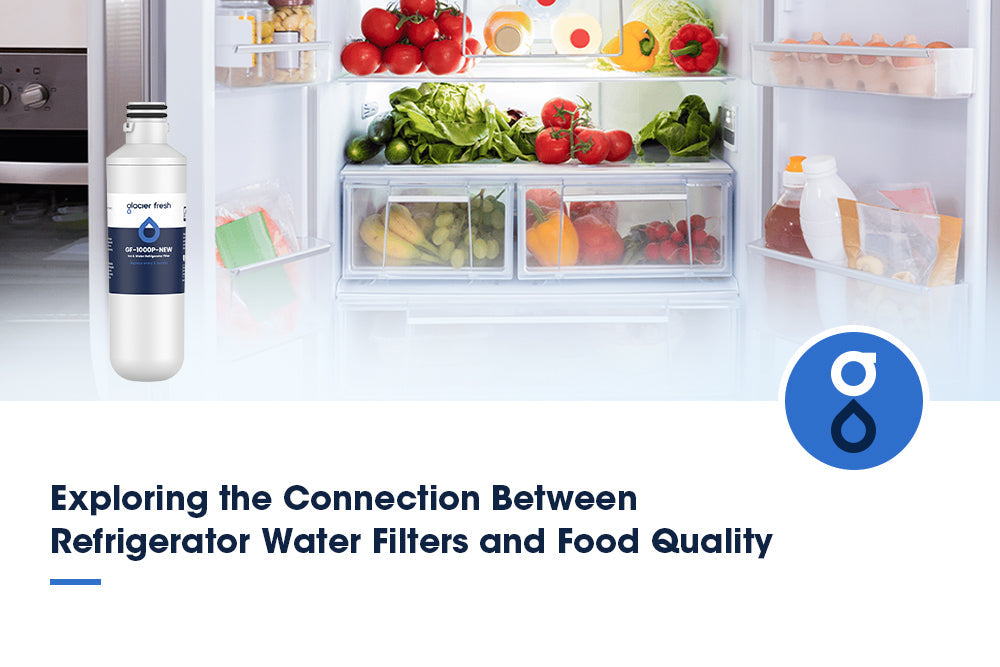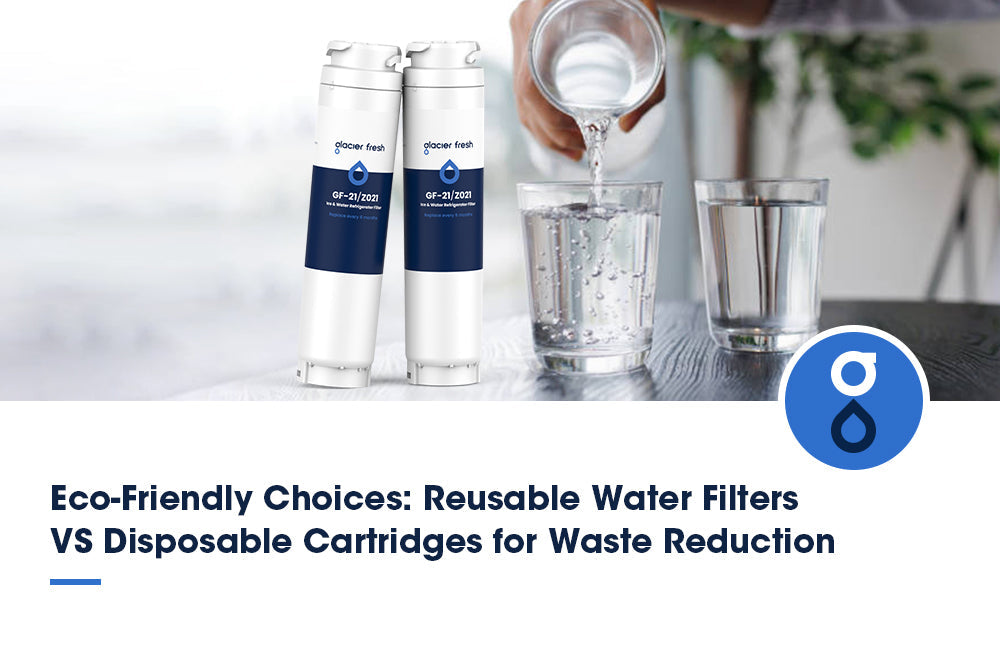Table of Contents:
How to define water quality and why is it important?
Physical factors affecting water quality
The effects of poor water quality on the flavor of your drinking water
Health risks associated with poor water quality
Methods to improve your drinking water quality
FAQs
Conclusion
Did you know that the flavor of your drinking water can be influenced by its quality? Studies have shown that poor water quality can negatively impact the taste of your tap water. From chemicals and contaminants to mineral content, the quality of your water plays a significant role in determining its flavor.
Understanding how water quality affects the taste of your drinking water is essential for ensuring that you enjoy a refreshing and pleasant experience every time you take a sip. In this article, we will explore the factors that influence water quality and how they can affect tap water's flavor. So, let's dive in and discover the fascinating connection between water quality and the taste of your drinking water.
How to define water quality and why is it important?

Water quality refers to water's physical, chemical, and biological characteristics that determine its suitability for various uses. The importance of water quality regulations can't be overstated. These regulations set standards and guidelines for maintaining safe and healthy water for consumption. Water quality testing methods play a vital role in assessing the condition of water sources and identifying potential contaminants.
Poor water quality can severely impact public health, leading to waterborne diseases and long-term health issues. Additionally, economic implications are associated with water quality issues, such as the cost of treating contaminated water and the impact on industries reliant on clean water. Water treatment facilities are critical in ensuring water quality by implementing filtration and purification processes to remove impurities and harmful substances.
Physical factors affecting water quality
When it comes to the physical factors that affect water quality, there are several key points to consider.

Temperature
Water temperature not only affects hydration but also influences taste perception. Cold water is often perceived as refreshing and can be preferred for its crispness, while hot water is commonly associated with warmth and comfort. However, temperature also plays a role in water quality. Higher temperatures can promote the growth of bacteria and other microorganisms, potentially compromising the safety of the water. On the other hand, brewing the perfect cup of tea requires precision in water temperature. Different types of tea require different temperatures to bring out their optimal flavors.
Mineral content

The mineral content of your drinking water can significantly impact its flavor. The pH balance, water hardness, and electrolyte balance all play a role in determining the taste of your water.
- pH balance: The acidity or alkalinity of your water can affect its flavor. Water with a balanced pH level tends to have a more neutral taste.
- Water hardness: Hard water, which contains high levels of minerals like calcium and magnesium, can give your water a slightly bitter or metallic taste.
- Electrolyte balance: Electrolytes, such as sodium and potassium, can enhance your water's flavor and give it a refreshing taste.
It's worth noting that different types of water, such as alkaline and mineral water, have unique flavors due to their specific mineral content. So, pay attention to the mineral composition of your drinking water to ensure you enjoy the best-tasting experience.
Dissolved solids and other contaminants
Dissolved solids, such as minerals and salts, can alter the taste perception of water. High-dissolved solids can produce a bitter or salty taste, while low levels can lead to a flat or bland taste. Chemical contaminants, on the other hand, can introduce undesirable flavors and odors to the water. To ensure the best taste and quality of your drinking water, it is essential to consider filtration options and water treatment methods that effectively remove these contaminants. Doing so lets you enjoy clean, refreshing water free from unpleasant tastes and odors.
Hydrogen sulfide and other gases
Ingesting hydrogen sulfide and other gases can significantly impact the flavor of your drinking water. These gases can be present in your water due to various factors, such as chemical reactions, environmental pollution, and microbial contamination. Hydrogen sulfide can give your water a pungent odor reminiscent of rotten eggs. This can make your drinking water distasteful and unpleasant to consume. Water treatment methods, such as oxidation or Glass Water Filter Pitcher, can help remove these gases and improve the taste and odor of your water.
Aesthetic issues(Discoloration, cloudness)
You may occasionally encounter aesthetic issues such as discoloration or cloudiness in your drinking water. These issues can be caused by various physical factors affecting water quality, including sediment particles, algal blooms, bacterial contamination, chemical pollutants, and chlorine treatment. Sediment particles like sand or silt can make your water appear muddy or murky.
Algal blooms, rapid algae growths in water bodies, can result in green or blue-green discoloration. Bacterial contamination can lead to a cloudy appearance and an unpleasant odor or taste. Chemical pollutants, such as industrial waste or agricultural runoff, may cause water to have a yellow or brownish tint. Lastly, chlorine treatment, although necessary for disinfection, can sometimes create a slight discoloration in the water.
The effects of poor water quality on the flavor of your drinking water
Metallic taste
With the presence of high levels of metals in your drinking water, a metallic taste can be experienced. This metallic aftertaste is unpleasant and can affect your overall drinking experience. Here are some key points to consider regarding the metallic taste in drinking water:
- Causes of metallic taste: High concentrations of metals such as iron, copper, or zinc can produce a metallic taste in your water.
- Remedies for metallic taste in water: Installing a water filtration system or using water treatment methods can help reduce the metallic taste in your drinking water.
- Impact of metallic taste on water consumption: A metallic taste can discourage you from drinking enough water, leading to dehydration and potential health issues.
Unpleasant taste or odor

An unpleasant taste or odor in your drinking water can significantly impact your drinking experience. Whether it's a metallic taste or an off-putting smell, poor water quality can ruin your enjoyment of a refreshing glass of water. These unpleasant flavors and odors can be attributed to various factors, including the chemical composition of the water and microbial contamination. The water treatment process plays a crucial role in mitigating these issues.
Discolored water
If your drinking water has a murky appearance, it can significantly impact your water's flavor. Discolored water is often caused by various factors related to poor water quality, such as rusty pipes, water discoloration, and plumbing issues. Here's how these factors affect the taste of your drinking water:
- Rusty pipes: When water passes through corroded or rusty pipes, it can pick up metallic flavors, making the water taste unpleasant.
- Water discoloration: If your water appears brown or yellow, it indicates impurities. These impurities can alter the taste of your water, giving it an earthy or metallic flavor.
- Plumbing issues: Faulty systems can contaminate your water supply, affecting its taste and quality.
Health risks associated with poor water quality
Poor water quality can pose significant health risks to individuals. Contaminated water can contain various harmful substances, such as bacteria, viruses, chemicals, and heavy metals, leading to waterborne diseases and other health problems. These contaminants can enter the water supply from various contamination sources, including industrial waste, agricultural runoff, and inadequate water treatment facilities. Waterborne diseases, such as cholera, typhoid fever, and dysentery, can result from contaminated water. To mitigate these risks, proper water treatment and filtration systems are essential to remove or reduce contaminants. Regular testing of water sources is also crucial to ensure safe drinking water. By addressing water quality issues, individuals can protect their health and well-being.

Methods to improve your drinking water quality
To ensure the best quality drinking water, you should regularly improve the water's filtration and treatment methods. Here are a few methods that can help you achieve this:
- Filtration systems: Installing a high-quality filtration system can effectively remove impurities such as sediments, chlorine, and heavy metals from your drinking water.
- Water purification: Utilizing water purification methods, such as distillation or carbon filtration, can further enhance the quality of your drinking water by removing contaminants and improving taste.
- Chemical treatment: Adding chemicals like chlorine or iodine to your water can kill harmful bacteria and viruses, making it safe for consumption. However, it's important to use these chemicals in the correct dosage.
- Reverse osmosis: This process involves using a semipermeable membrane to remove dissolved solids, contaminants, and impurities from the water, resulting in cleaner and healthier drinking water.
- UV disinfection: Ultraviolet light can effectively kill bacteria, viruses, and other microorganisms in the water, providing a chemical-free disinfection method.
FAQs
How can I test the quality of my drinking water at home?
You can test your drinking water quality at home using DIY water test kits. These kits provide water quality indicators to check for contaminants and ensure the safety of your drinking water.
Besides filtration systems, what other methods can be used to improve drinking water quality?
To improve your drinking water quality, you can try natural alternatives like using water purification methods such as chemical disinfection, UV treatment, or even the traditional boiling method. These options can help ensure clean and safe drinking water.
Conclusion
In conclusion, water quality plays a crucial role in the flavor of your drinking water. Poor water quality can negatively affect the taste, making it unpleasant or undrinkable. Additionally, there are health risks associated with consuming water of low quality. It's essential to understand the physical factors that affect water quality and take the necessary steps to improve it. You can enjoy better-tasting and safer drinking water by ensuring good water quality.

















